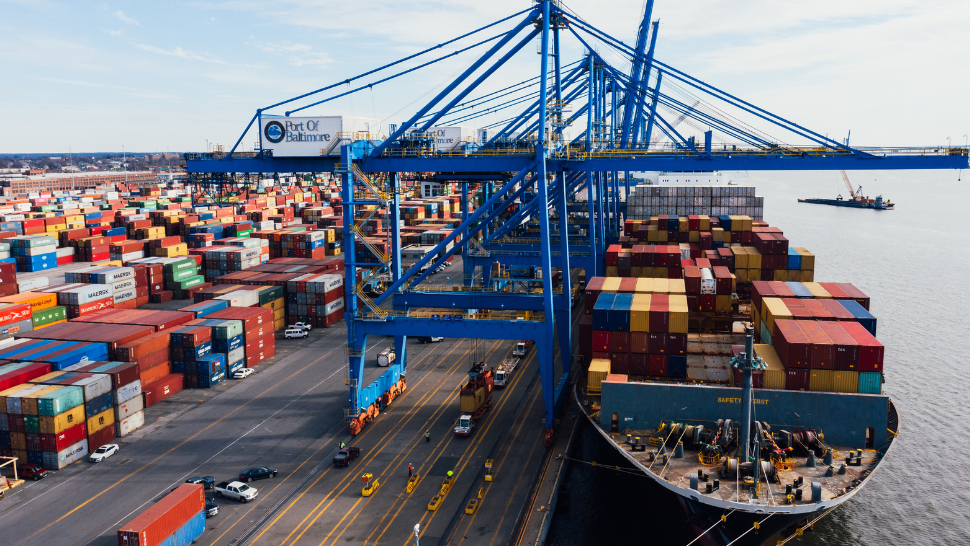As we’ve previously shared, 2025 is providing us in the shipping industry with some challenges we haven’t previously had to maneuver. From geopolitical tensions to freight rate volatility, today’s businesses must navigate a complex global landscape. It’s important to know what’s coming next and how you can prepare yourself and your business for success when the world is constantly shifting. Although we don’t have a crystal ball, with years of experience as a freight forwarder, we’re prepared to offer some insights.
Let’s discuss some of the reasons behind today’s obstacles, including how you can help overcome them.
Surging Freight Capacity—and Prices—on the Asia-Europe Route
Freight rate volatility isn’t just a buzzword; it’s become a daily reality for those who ship internationally. One of the more surprising developments this year has been a sharp increase in container shipping capacity from the Far East to North Europe.
Typically, the first quarter is a quieter period in global shipping. But this year, rates are surging when they would normally taper. Analysts attribute this anomaly to several potential causes, including:
- Steep US tariffs on Chinese goods, which are prompting shippers to reroute shipments through Europe.
- Nervous market behavior from importers who are rushing to secure capacity amid global uncertainty.
- Increased shipping activity from redirected traffic through the Red Sea.
This mix of high capacity and rising rates is making the market harder to predict, especially for businesses trying to manage shipping costs. It’s also worth noting that when this much capacity hits North European ports all at once, congestion is a likely outcome.
European Port Congestion: Delays and Disruption
Northern Europe is already feeling the effects of congestion as a result of increased traffic. Vessels are arriving off schedule, network changes are in motion, and yard space is limited. This is another factor in why we’re currently dealing with freight rate volatility. The ports of Hamburg, Germany and Rotterdam, Netherlands are facing operational slowdowns that could take months to resolve.
Why does this matter? Because congestion causes a domino effect. Here’s what happens when there is port congestion:
- Ship delays ripple across global schedules.
- Terminal capacity is stretched.
- Container availability becomes less predictable.
- Inland transport and warehousing are affected.
If your business relies on just-in-time deliveries or exports to European markets, planning ahead and remaining flexible with routes and timelines is critical in the months ahead.
Red Sea Diversions: A Longer, Costlier Journey
Geopolitical tensions have also reshaped major shipping lanes. Since late 2023, attacks by Yemen’s Houthi rebels have made traveling through the Red Sea and Suez Canal a high-risk route for many carriers.
The number of vessels passing through the Suez Canal has dropped nearly 50% year-over-year. Many carriers are now routing ships around the Cape of Good Hope—a detour that adds 10–14 days and significantly increases fuel and crew costs.
This rerouting has a ripple effect:
- More vessels are needed to maintain service levels.
- Insurance and war-risk premiums go up.
- Port schedules become harder to keep.
These increased operational costs are being passed on to shippers, contributing to the broader freight rate volatility we’re seeing in Q2.
The US Response: CMA CGM’s Major Investment in American Shipping
While much of the current disruption in the shipping industry is global, there are efforts underway to bolster more stable shipping solutions. French shipping giant CMA CGM recently announced a $20 billion investment in US maritime infrastructure over the next four years.
This includes plans to:
- Support US-flag vessel operations.
- Invest in American shipbuilding.
- Expand logistics and air cargo networks.
- Modernize port infrastructure.
The goal here is to create a more self-reliant, flexible US supply chain—something that may benefit American shippers in the long term by reducing dependence on fragile overseas routes.
While these changes won’t be felt overnight, they do indicate a shift toward building regional resiliency. Businesses with US-based production or warehousing should stay tuned to these developments, which could lead to more cost-effective and timely shipping options within the next few years.
Carrier Consolidation: The Gemini Cooperation
Another significant shift in global shipping is the cooperation between Hapag-Lloyd and Maersk, known as Gemini Cooperation. While not a formal merger, this strategic alliance is designed to increase reliability and reduce delays across major trade lanes.
This partnership will cover seven trades and offer 57 services through 340 vessels. The expectation is that the new offering will:
- Provide more consistent weekly service schedules.
- Optimize shared terminal use and port calls.
- Increase the overall resilience of vessel operations.
These improvements could eventually help stabilize freight rate volatility by improving operational efficiency and predictability. For shippers, this means fewer disruptions and better planning capabilities once the network is fully rolled out.
How to Best Deal with Freight Rate Volatility
Despite the uncertainty in the shipping industry, there are a several things you can do now to help protect your business:
1. Stay Informed
Freight market conditions change fast. Partner with your logistics provider or freight forwarder to obtain regular updates to help you adjust timelines, budgets, and expectations in real time.
2. Plan for Longer Lead Times
Whether due to Red Sea diversions or European port delays, transit times are longer now. Pad your lead times where possible and communicate early with customers and vendors.
3. Diversify Routes and Ports
Flexibility is a strength in volatile markets. Exploring multiple shipping routes and entry points can reduce your risk of disruption.
4. Review Your Shipping Contracts
Index-linked or long-term freight contracts may not be working in your favor this year. Evaluate your agreements and consider spot-rate strategies where appropriate.
5. Lean on Technology
Modern tracking tools and AI-driven logistics platforms provide better visibility and predictive analytics. Use them to spot bottlenecks before they become major problems.
Need help navigating it all? Contact Cyclone Shipping for strategic logistics support tailored to today’s conditions.




